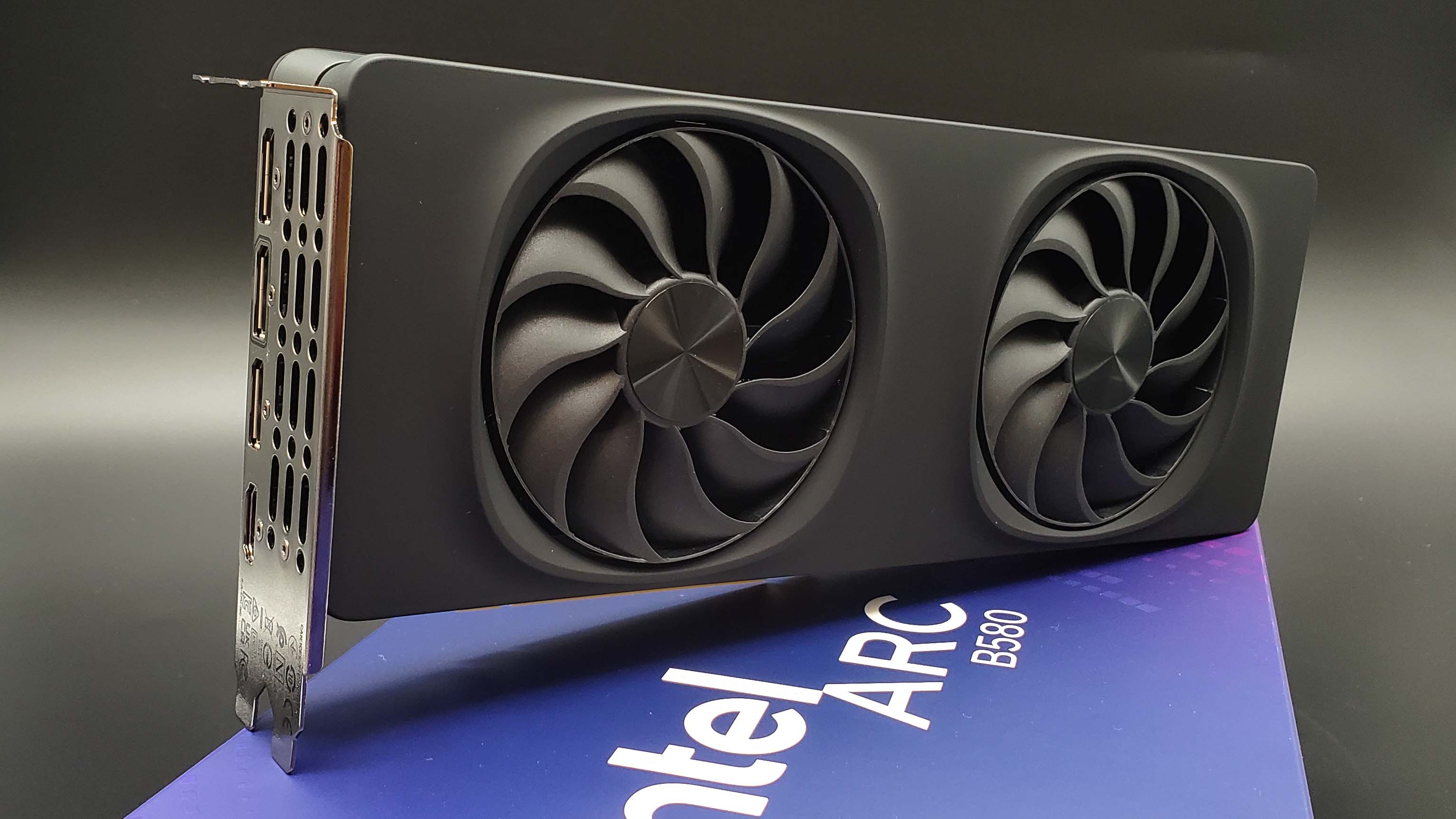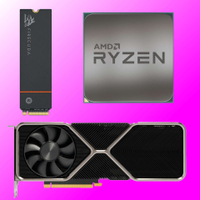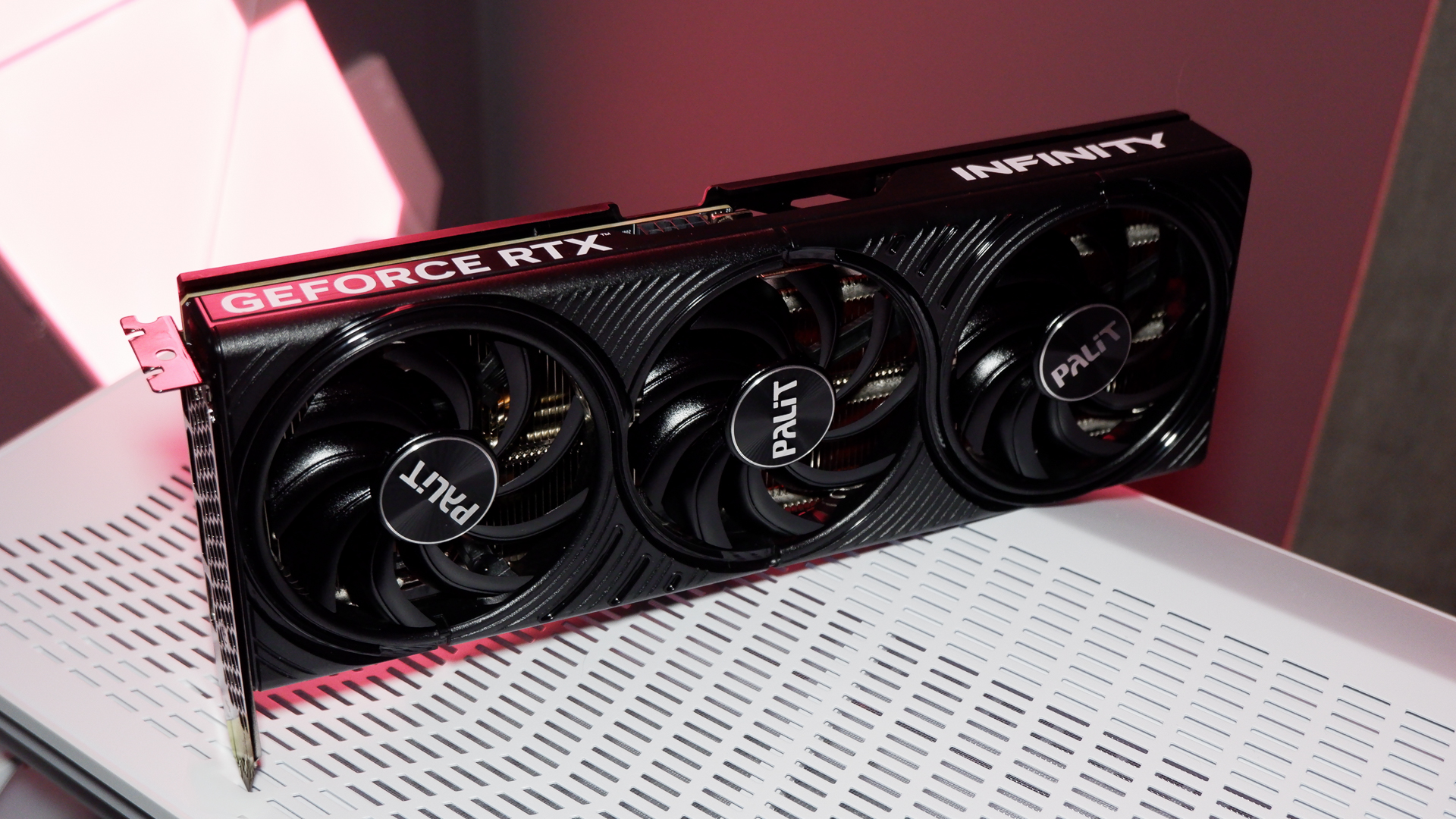Shipping document suggests that a 24 GB version of Intel's Arc B580 graphics card could be heading to market, though not for gaming
AI setups love RAM and matrix cores, so a stack of big VRAM B580s would be snapped up.

While Intel's new Battlemage B580 graphic card isn't setting any records for gaming performance, it does have a few things going for it: namely matrix cores and a healthy chunk of VRAM. Both of these are handy for professional applications and AI stuff, so word that a 24 GB version has been shipped for research purposes could make the B580 a real budget powerhouse.
This little tidbit was spotted by X user Tomasz Gawroński who noticed a shipping document listing two entries for Battlemage G21 cards (aka Arc B580) with an all-important phrase: clamshell. Forget seafood, this is a way that GDDR6 memory modules can be wired on a graphics card, to allow double the amount of VRAM you'd normally get.
Intel preparing B580/B570 in clamshell configuration ?32GB/20gb vram or am i delusional ? Killer AI card ? pic.twitter.com/d9u7tuCzBqDecember 14, 2024
All GDDR6 modules, be they from Samsung, Micron, or SK Hynix, have a data bus that's 32 bits wide. However, the bus can be used in a 16-bit mode—the entire contents of the RAM are still accessible, just with less peak bandwidth for data transfers. Since the memory controllers in the Arc B580 are 32 bits wide, two GDDR6 modules can be wired to each controller, aka clamshell mode.
With six controllers in total, Intel's largest Battlemage GPU (to date, at least) has an aggregated memory bus of 192 bits and normally comes with 12 GB of GDDR6. Wired in clamshell mode, the total VRAM now becomes 24 GB.
This is commonly employed on workstation graphics cards, such as AMD's Radeon Pro W7900 and Nvidia's RTX 6000 Ada, both of which sport 48 GB. They're professional market versions of the RX 7900 XTX and RTX 4090 respectively, which normally boast 24 GB, of course. Another Nvidia card that uses VRAM in clamshell mode is the 16 GB version of the RTX 4060 Ti.
That has a 128-bit memory bus and normally has four GDDR6 modules, for a total of 8 GB of VRAM. The 16 GB version has eight modules (four on each side of the circuit board) but since there aren't any more memory controllers available, they have been wired in clamshell mode.
Aside from in a handful of games, the little RTX 4060 Ti can't really make use of 16 GB, though there are some occasions where 8 GB isn't enough either. So what use would 24 GB be on an Arc B580? Well, it's not for gaming as the 12 GB it has is more than enough. Instead, such cards would be targeted at the professional market, just like the W7900 and RTX 6000.
The biggest gaming news, reviews and hardware deals
Keep up to date with the most important stories and the best deals, as picked by the PC Gamer team.
Intel's desktop GPUs sport a fair number of matrix cores (Intel calls them XMX units) and they're rather handy for doing AI calculations. Along with a small mountain of RAM, you potentially have something that could be scaled up to be a veritable AI budget monster. I say budget but we all know that pro-level graphic cards are never sold at anything remotely resembling an affordable price—how does £2,280 sound for a data centre version of the Arc A770?
We may never see a 24 GB Arc B580 in the wild, as Intel may just keep them for AI/data centre partners like HP and Lenovo, but you never know. If we ever happen to stumble across one and get our hands on it for testing, we'll be sure to give you the lowdown on its AI chops. You'll be easily able to guess its gaming credentials.
Best CPU for gaming: Top chips from Intel and AMD.
Best gaming motherboard: The right boards.
Best graphics card: Your perfect pixel-pusher awaits.
Best SSD for gaming: Get into the game first.

Nick, gaming, and computers all first met in 1981, with the love affair starting on a Sinclair ZX81 in kit form and a book on ZX Basic. He ended up becoming a physics and IT teacher, but by the late 1990s decided it was time to cut his teeth writing for a long defunct UK tech site. He went on to do the same at Madonion, helping to write the help files for 3DMark and PCMark. After a short stint working at Beyond3D.com, Nick joined Futuremark (MadOnion rebranded) full-time, as editor-in-chief for its gaming and hardware section, YouGamers. After the site shutdown, he became an engineering and computing lecturer for many years, but missed the writing bug. Cue four years at TechSpot.com and over 100 long articles on anything and everything. He freely admits to being far too obsessed with GPUs and open world grindy RPGs, but who isn't these days?


